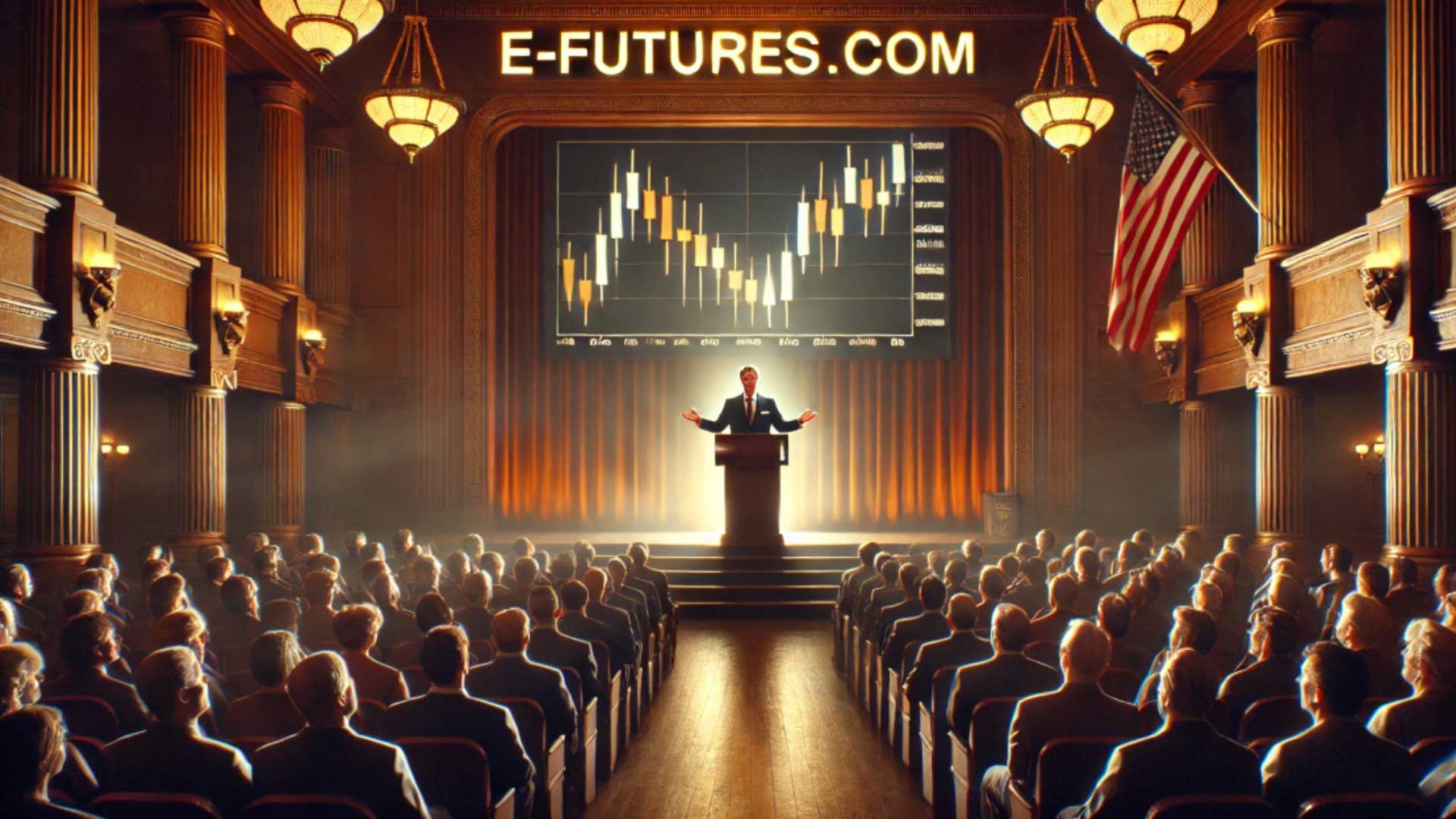Futures trade has undergone a remarkable evolution over the years, transitioning from bustling trading floors to sophisticated online platforms. This transformation has revolutionized the way futures contracts are traded, impacting both futures brokers and futures traders across the globe. By understanding the intricacies of this shift, traders can appreciate the advantages and disadvantages of each system and recognize the unique value provided by modern platforms like E-Futures International. With decades of experience and a stellar reputation, E-Futures.com offers a seamless trading experience for all traders, from novices to seasoned professionals.
The Evolution of Futures Trading: From Pits to Platforms
Historically, futures trading took place on trading floors, often referred to as pits, where futures brokers and traders congregated to execute trades via open outcry. This system relied on a blend of hand signals, vocal calls, and face-to-face negotiations. Traders competed for contracts by shouting their bids and offers, creating a dynamic and sometimes chaotic environment.
The Chicago Mercantile Exchange (CME) and the Chicago Board of Trade (CBOT) were among the most prominent hubs for in-person futures contract trading. These exchanges witnessed countless pivotal moments, such as the wheat futures boom in the early 20th century and the rise of financial futures in the 1970s. For decades, the pits were the heart of futures trading, fostering a sense of camaraderie and fierce competition.
However, the advent of technology in the late 20th century marked the beginning of a paradigm shift. By the 1990s, electronic trading platforms emerged, allowing traders to execute trades from their computers. This innovation gained momentum, and by the early 2000s, major exchanges like CME began transitioning to fully electronic systems. Today, online trading platforms dominate the futures market, making futures trading more accessible than ever before.
Advantages and Disadvantages of In-Person Trading
Advantages:
- Transparency and Trust: The face-to-face nature of in-person trading fostered a high level of trust. Traders could gauge the intentions and strategies of their counterparts through direct interaction.
- Camaraderie: The trading floor was a close-knit community. Futures brokers and traders formed strong relationships, often collaborating and sharing insights.
- Instant Decision-Making: The immediacy of open outcry allowed traders to make split-second decisions based on real-time market dynamics.
Disadvantages:
- Limited Accessibility: Trading floors were exclusive spaces, accessible only to a select group of professionals. Aspiring traders often faced significant barriers to entry.
- Human Error: The reliance on manual processes increased the risk of errors in trade execution.
- Geographical Constraints: Traders needed to be physically present at the exchange, which limited participation to those located near major financial hubs.
Advantages and Disadvantages of Online Trading
Advantages:
- Global Accessibility: Online trading platforms allow anyone with an internet connection to participate in futures trading. This democratization has expanded the pool of futures traders.
- Efficiency and Speed: Electronic systems execute trades almost instantaneously, reducing latency and increasing market efficiency.
- Advanced Tools and Analytics: Platforms like E-Futures International offer sophisticated charting tools, market data, and automated trading capabilities, enabling traders to make informed decisions.
- Cost-Effectiveness: Online trading often reduces transaction costs, as traders can bypass intermediaries.
Disadvantages:
- Technical Challenges: Dependence on technology introduces risks such as system outages, cyber threats, and connectivity issues.
- Loss of Personal Interaction: The absence of face-to-face communication can make trading feel impersonal and isolating.
- Information Overload: The vast amount of data and tools available online can overwhelm inexperienced traders.
Real-Life Anecdotes and Case Studies
The Transition of a Veteran Trader
Consider the story of John, a veteran futures trader who began his career in the pits of the CBOT. For decades, John thrived in the high-energy environment of open outcry, specializing in agricultural futures. However, as electronic trading gained prominence, John faced a choice: adapt or retire. Initially hesitant, he enrolled in a training program to familiarize himself with online platforms. Today, John is an advocate for electronic trading, citing the convenience and analytical tools provided by platforms like E-Futures International as game-changers.
Hypothetical Scenario: Navigating Volatility
Imagine a new futures trader, Sarah, who uses an online platform to trade crude oil futures. Armed with E-Futures International’s real-time market data and advanced charting tools, she identifies a bullish trend and executes a long trade. A sudden geopolitical event causes volatility, but Sarah’s use of automated stop-loss orders ensures she exits the trade with minimal losses. This scenario highlights the risk management advantages offered by online platforms.
Case Study: The Flash Crash of 2010
The flash crash of May 6, 2010, underscores the dual-edged nature of electronic trading. During this event, the Dow Jones Industrial Average plunged nearly 1,000 points within minutes, driven by algorithmic trading and market panic. While electronic systems facilitated rapid recovery, the incident revealed vulnerabilities in automated processes. Futures brokers and platforms like E-Futures International have since implemented measures to prevent similar occurrences, such as circuit breakers and enhanced monitoring systems.
Why E-Futures.com Stands Out
E-Futures.com, with its top-performing platform E-Futures International, is a premier choice for futures traders seeking reliability and innovation. Here are some key reasons why:
1. User-Friendly Interface
E-Futures International offers an intuitive platform designed for traders of all experience levels. Novices appreciate the straightforward navigation, while seasoned traders value the customizable features and advanced tools.
2. Comprehensive Tools
The platform provides a suite of tools, including real-time quotes, market news, and sophisticated charting capabilities. These features empower traders to analyze trends, develop strategies, and execute trades with precision.
3. Regulatory Excellence
E-Futures.com maintains an exemplary reputation with regulatory bodies, adhering to National Futures Association (NFA) guidelines and prioritizing client safety.
4. Outstanding Customer Support
Traders benefit from 24/7 customer support, ensuring assistance is always available. The company’s decades of experience in the futures markets translate into unparalleled expertise.
5. TrustPilot Ratings
With a 5 out of 5-star rating on TrustPilot, E-Futures.com has earned the trust of the trading community. Positive reviews frequently highlight the platform’s reliability, transparency, and user-centric approach.
The evolution of futures trading from in-person pits to online platforms represents a monumental shift in the financial landscape. While traditional methods fostered personal connections and trust, electronic trading offers unparalleled efficiency, accessibility, and analytical power. Platforms like E-Futures International embody the best of modern futures trading, combining cutting-edge technology with decades of industry expertise.
E-Futures.com’s commitment to excellence, evidenced by its user-friendly platform, comprehensive tools, and regulatory compliance, makes it a top choice for futures traders. Whether you’re a seasoned professional navigating complex markets or a beginner exploring trading futures, E-Futures.com provides the resources and support needed for success. As futures trading continues to evolve, platforms like these will undoubtedly shape the future of the industry.
To open an account with E-Futures.com, please click here.
Ready to start trading futures? Call US 1(800)454-9572 – Int’l (310)859-9572 email info@cannontrading.com and speak to one of our experienced, Series-3 licensed futures brokers and start your futures trading journey with E-Futures.com today.
Disclaimer – Trading Futures, Options on Futures, and retail off-exchange foreign currency transactions involves substantial risk of loss and is not suitable for all investors. Past performance is not indicative of future results. You should carefully consider whether trading is suitable for you in light of your circumstances, knowledge, and financial resources. You may lose all or more of your initial investment. Opinions, market data, and recommendations are subject to change at any time.
Important: Trading commodity futures and options involves a substantial risk of loss. The recommendations contained in this writing are of opinion only and do not guarantee any profits. This writing is for educational purposes. Past performances are not necessarily indicative of future results.
**This article has been generated with the help of AI Technology. It has been modified from the original draft for accuracy and compliance.








